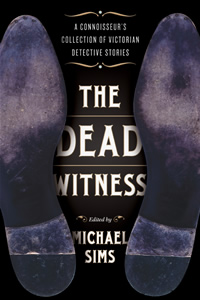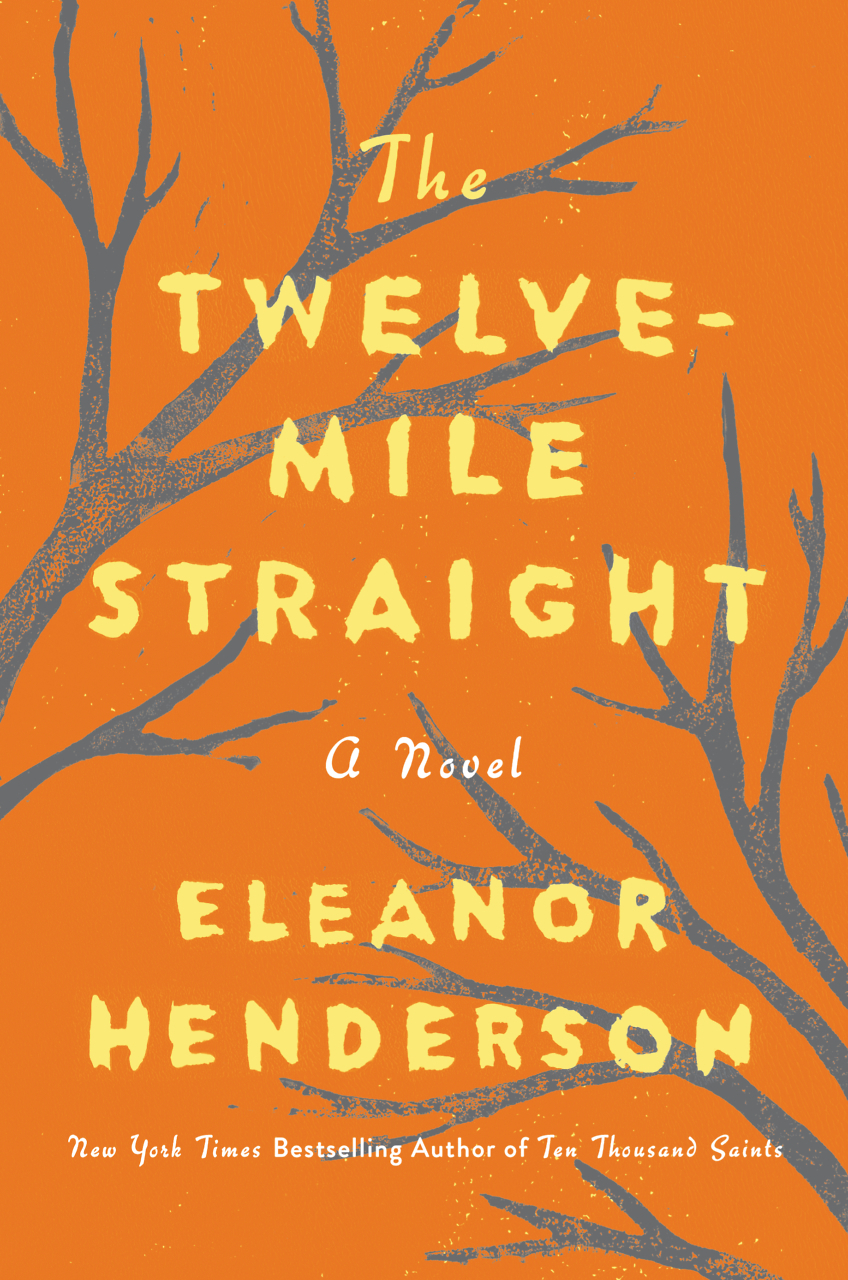The Triumph of Rationality
Michael Sims introduces a fascinating cast of Victorian detectives—both real and imagined
Michael Sims’s new collection of Victorian detective stories, The Dead Witness, is a cornucopia of dastardly delights and surprises. Watching the characters patiently unravel knots and ingeniously solve puzzles provides the delight. The surprises are the depth and breadth of variety represented in Sims’s overview of the genre. Humor and pathos, moralism and mercy, parody and tragedy, horror and retribution—the full spectrum of the human psyche is on display in this collection. The international cast of characters features authors and protagonists alike from England, Scotland, Australia, Canada, France, and the United States. They include a mild-mannered Catholic priest and a tough-talking Virginian, a folksy Canadian tracker and a wide-eyed teenaged boy, brothers and sisters, husbands and wives, a blind man, a Musketeer, a bumbler, a dilettante, and, of course, that curiously observant Englishman with a penchant for violins and opium.
Originally published between 1837 and 1915, most of the twenty-two selections are short stories, but Sims also includes novel excerpts, magazine and newspaper articles, and the transcript of a coroner’s inquest from one of the grisly murders attributed to Jack the Ripper. Many of the authors will be familiar to readers for their work within other literary traditions—Edgar Allan Poe, Charles Dickens, Wilkie Collins, Alexandre Dumas, Bret Harte, and G. K. Chesterton—but there are new faces here, as well. Not for the faint of heart, each story requires that some mayhem be perpetrated on the poor unfortunate victims, who are consequently interred alive, drowned, dismembered, thrown from windows, stuffed up chimneys, bludgeoned, stabbed, and nearly electrocuted. Sims introduces each selection by explaining its significance within the genre and includes biographical information about each author. He takes particular pains to highlight the changing role of women in detective fiction, both as characters and creators.
 Inspired by the theories of the renowned French naturalist Baron Cuvier, whose studies in comparative anatomy demonstrated that a single bone from an individual animal could reveal a wealth of information about its identity and behavior, Edgar Allan Poe created the introspective and insightful C. Auguste Dupin for his 1841 story “The Murders in the Rue Morgue,” generally agreed to be the first fully realized detective story ever written. Ten years later, Charles Dickens took a walk through the nighttime streets of London with Inspector Charles Frederick Field of the London metropolitan police force. “On Duty with Inspector Field” recounts in detail the cast of unsavory characters they meet and the squalid surroundings they pass through, while representing always-in-control Inspector Field as the undisputed authority among the dispossessed and disaffected. With the touch of a master, Dickens sets the scene in the first paragraph: “How goes the night? Saint Giles’s clock is striking nine. The weather is dull and wet and the long lines of street lamps are blurred, as if we saw them through tears. A damp wind blows and rakes the pieman’s fire out, when he opens the door of his little furnace, carrying away an eddy of sparks.”
Inspired by the theories of the renowned French naturalist Baron Cuvier, whose studies in comparative anatomy demonstrated that a single bone from an individual animal could reveal a wealth of information about its identity and behavior, Edgar Allan Poe created the introspective and insightful C. Auguste Dupin for his 1841 story “The Murders in the Rue Morgue,” generally agreed to be the first fully realized detective story ever written. Ten years later, Charles Dickens took a walk through the nighttime streets of London with Inspector Charles Frederick Field of the London metropolitan police force. “On Duty with Inspector Field” recounts in detail the cast of unsavory characters they meet and the squalid surroundings they pass through, while representing always-in-control Inspector Field as the undisputed authority among the dispossessed and disaffected. With the touch of a master, Dickens sets the scene in the first paragraph: “How goes the night? Saint Giles’s clock is striking nine. The weather is dull and wet and the long lines of street lamps are blurred, as if we saw them through tears. A damp wind blows and rakes the pieman’s fire out, when he opens the door of his little furnace, carrying away an eddy of sparks.”
Arthur Conan Doyle was certainly influenced by Poe and by the growing role of the police detective as portrayed by Dickens and others, but the principal inspiration for Sherlock Holmes, represented here by an excerpt from the 1887 novel A Study in Scarlet, was a Scottish physician by the name of Joseph Bell, a larger-than-life figure with a remarkable eye for detail. (Just for fun, Sims has also included Bret Harte’s hilarious parody of Sherlock Holmes, “The Stolen Cigar Case,” in which Holmes—portrayed as a vain, dictatorial madman—groundlessly accuses a fawning toady-like Watson of theft.)
Not all of the protagonists in these stories are cool professionals or even confident amateurs. In “The Diary of Anne Rodway,” written by Wilkie Collins and published in 1856, a sweetly virtuous heroine exhibits a courage she does not know she possesses in order to discover the identity of the man who caused the untimely death of her friend. With true Victorian passion she tells the story through breathless diary entries: “Not once did I close my eyes that night. A kind of fever got possession of me—a vehement yearning to go on from this first discovery and find out more, no matter what the risk might be.” Thanks to help from kindly male characters, she is rewarded for her devotion to her friend. In time, heroines of detective fiction would evolve into less helpless and more capable detectives, but changes in acceptable roles for women would come too late for some.
 A particularly poignant example is Mary Fortune, author of the collection’s title story—believed to be the first detective story ever written by a woman. Born in Ireland, Fortune was raised in Canada and moved to Australia in her early twenties. As a woman writing within an all-male genre, Fortune was never able to achieve the kind of success her peers enjoyed. She was once offered an editorial position at a newspaper in Victoria, Sims points out, only to be rebuffed when the editor realized she was female. Not only was she denied credit for having written “The Dead Witness,” which was published in an Australian magazine in 1866 as part of a series written by someone else, Fortune was forced to use a pseudonym (“Waif Wander,” later shortened to “W. W.”) for every story she ever published—and there were a lot of them. Following the success of “The Dead Witness,” Fortune began her own series called “The Detective’s Album,” for which she wrote a story each month for the next forty years. It was not until the 1950s that a researcher discovered and publicly revealed her identity. In “The Dead Witness,” Fortune combines lyrical descriptions of the natural Australian landscape (“the little lizards that sit here and there upon logs and stumps, and look at the passerby with their heads on one side, and such a funny air of knowing stupidity in their small eyes”) with a suspenseful tale involving the murder of a young photographer and the detective who goes undercover on a sheep ranch to catch the killer.
A particularly poignant example is Mary Fortune, author of the collection’s title story—believed to be the first detective story ever written by a woman. Born in Ireland, Fortune was raised in Canada and moved to Australia in her early twenties. As a woman writing within an all-male genre, Fortune was never able to achieve the kind of success her peers enjoyed. She was once offered an editorial position at a newspaper in Victoria, Sims points out, only to be rebuffed when the editor realized she was female. Not only was she denied credit for having written “The Dead Witness,” which was published in an Australian magazine in 1866 as part of a series written by someone else, Fortune was forced to use a pseudonym (“Waif Wander,” later shortened to “W. W.”) for every story she ever published—and there were a lot of them. Following the success of “The Dead Witness,” Fortune began her own series called “The Detective’s Album,” for which she wrote a story each month for the next forty years. It was not until the 1950s that a researcher discovered and publicly revealed her identity. In “The Dead Witness,” Fortune combines lyrical descriptions of the natural Australian landscape (“the little lizards that sit here and there upon logs and stumps, and look at the passerby with their heads on one side, and such a funny air of knowing stupidity in their small eyes”) with a suspenseful tale involving the murder of a young photographer and the detective who goes undercover on a sheep ranch to catch the killer.
In 1893 Catherine Louisa Pirkis (writing as C. L. Pirkis) became the first woman to create a female detective. As Sims explains, “Loveday Brooke has the distinction of being not only a salaried professional private investigator but one who isn’t presented as hyperfeminine to balance out her allegedly unfeminine career.” In fact, in “The Murder at Troyte’s Hill,” Brooke’s character is so unemotional that she comes off as stiff and two-dimensional, rather like a more somber, grown-up Nancy Drew minus the blue roadster. Not so Violet Strange, the New York socialite character created in 1915 by Anna Katharine Green, the author of the first detective novel written by a woman. In the final story of the collection, “An Intangible Clue,” the haughtily self-possessed Violet is at first reluctant to involve herself in anything as common as a murder investigation, as she explains to her employer: “When for reasons I have never thought myself called upon to explain, I consented to help you now and then with some matter where a woman’s tact and knowledge of the social world might tell…I never thought it should be necessary for me to state…that I should not be asked to touch the sordid or the bloody. But it seems I was mistaken and I must stoop to be explicit.” Once her curiosity is aroused, however, Violete is not averse to using her feminine wiles and especially her social position to gather clues missed by more traditional detectives.
Notable among the male protagonists are those characters that do not fit the traditional detective mold. G. K. Chesterton’s portrayal of the unassuming Father Brown was based on a Catholic priest and lifelong friend named John O’Connor. In 1904’s “The Hammer of God,” Father Brown is described as “not an interesting man to look at, having stubby brown hair and a round and stolid face,” and in a striking example of damning by faint praise, “Father Brown had fixed his eyes on the speaker so long and steadily as to prove that his large grey, ox-like eyes were not quite so insignificant as the rest of his face.” Rest assured that it is the insignificant Father Brown who discovers the perpetrator in the end. Another unusual detective is Melville Davisson Post’s Uncle Abner, whom he created in 1911. The narrator of “The Angel of the Lord” is Uncle Abner’s nephew, who describes his uncle as “one of those austere, deeply religious men who were the product of the Reformation. He always carried a Bible in his pocket and he read it where he pleased. Once the crowd at Roy’s Tavern tried to make sport of him when he got his book out by the fire; but they never tried it again. When the fight was over Abner paid Roy eighteen silver dollars for the broken chairs and the table—and he was the only man in the tavern who could ride a horse. Abner belonged to the church militant and his God was a war lord.” It is this very strength of character that enables him to confront a murderer and prevent additional loss of life.
Notwithstanding Poe’s rather cynical criticism of the genre he more or less created (“Where is the ingenuity of unraveling a web which you yourself have woven for the express purpose of unraveling?”), the popularity of detective fiction is indisputable. By way of explanation, Sims points to its portrayal of “the triumph of rationality and virtue in a dark and violent world” and how the protagonists’ “close attention to the physical world…remind[s] us of cause and effect in this messy society, of the ripples that extend outward from our actions.” The detective’s challenge is to bring order out of chaos—to provide a rational explanation for a perplexing set of circumstances, to protect (or at least avenge) those who are most vulnerable, and to prove that the rules of society, and even of nature itself, cannot be trampled with impunity. In doing so, the successful sleuth restores a reader’s own comforting sense of justice and fair play. Making it all look easy is just the fun part.


